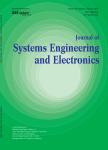Airborne sparse flight array SAR 3D imaging based on compressed sensing in frequency domain
Airborne sparse flight array SAR 3D imaging based on compressed sensing in frequency domain作者机构:Science and Technology on Electromagnetic Scattering LaboratoryBejing Insititute of Environment FeaturesBeijing 100854China
出 版 物:《Journal of Systems Engineering and Electronics》 (系统工程与电子技术(英文版))
年 卷 期:2023年第34卷第1期
页 面:56-67页
核心收录:
学科分类:080904[工学-电磁场与微波技术] 0810[工学-信息与通信工程] 0809[工学-电子科学与技术(可授工学、理学学位)] 08[工学] 081105[工学-导航、制导与控制] 081001[工学-通信与信息系统] 081002[工学-信号与信息处理] 0825[工学-航空宇航科学与技术] 0811[工学-控制科学与工程]
主 题:three-dimensional(3D)imaging synthetic aperture radar(SAR) sparse flight interferometry compressed sensing(CS)
摘 要:In airborne array synthetic aperture radar(SAR), the three-dimensional(3D) imaging performance and cross-track resolution depends on the length of the equivalent array. In this paper, Barker sequence criterion is used for sparse flight sampling of airborne array SAR, in order to obtain high cross-track resolution in as few times of flights as possible. Under each flight, the imaging algorithm of back projection(BP) and the data extraction method based on modified uniformly redundant arrays(MURAs) are utilized to obtain complex 3D image pairs. To solve the side-lobe noise in images, the interferometry between each image pair is implemented, and compressed sensing(CS) reconstruction is adopted in the frequency domain. Furthermore, to restore the geometrical relationship between each flight, the phase information corresponding to negative MURA is compensated on each single-pass image reconstructed by CS. Finally,by coherent accumulation of each complex image, the high resolution in cross-track direction is obtained. Simulations and experiments in X-band verify the availability.




